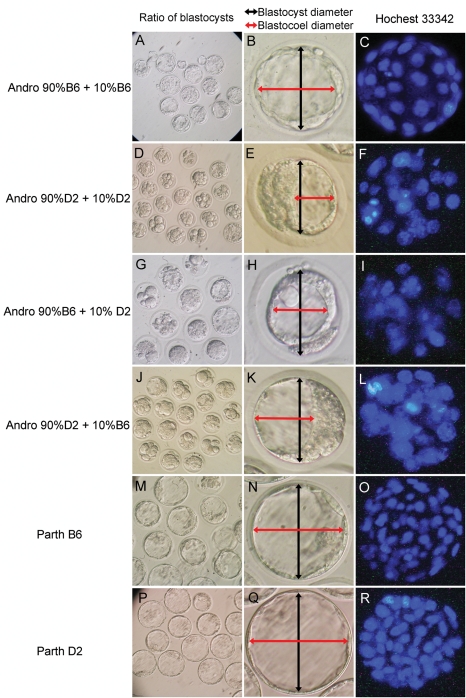Figure 5.
Morphology analysis of embryos developed to 120 h post-hCG.
Androgenetic embryos coupled with ooplasm donation were constructed. After culture for 120 h post-hCG, the morphology of each embryo was analyzed with the criterion of ratio of blastocysts formation (A, D, G and J), diameter of blastocyst/blastocoel (B, E, H and K) and cell number (C, F, I and L). The blastocysts derived from parthenogenetic embryos were also analyzed as controls (M–R). Diploid androgenones constructed with 90% B6+10% B6 develop to the blastocyst stage at a high frequency (A). These blastocysts are relatively normal in morphology, with well-expanded blastocoel cavities (B) and larger cell numbers (C). Diploid androgenetic embryos form blastocysts poorly when made with 90% D2+10% D2 ooplasm (D). The few androgenetic blastocysts that develop from D2 oocytes have very abnormal morphologies, with small blastocoel cavities (E), reduced cell numbers and many excluded cells (F). For inter-strain ooplasm donated androgenones, 10% ooplasm donation from D2 oocytes to B6 oocytes significantly decreased the cell number (I), blastocyst and blastocoel diameter (H) of the androgenones. In contrast, 10% ooplasm donation from B6 oocytes to D2 oocytes did not increase the androgenones quality (J–L). For other kinds of constructions such as parthenogenetic embryos, the blastocysts quality is much better than the androgenones (M–R).

